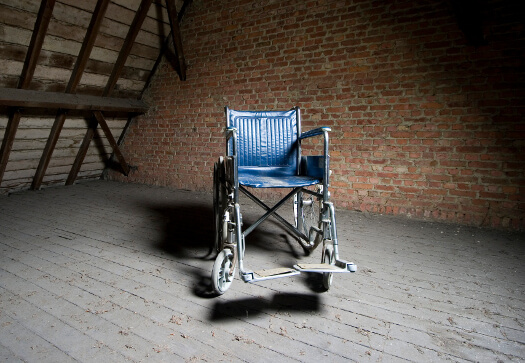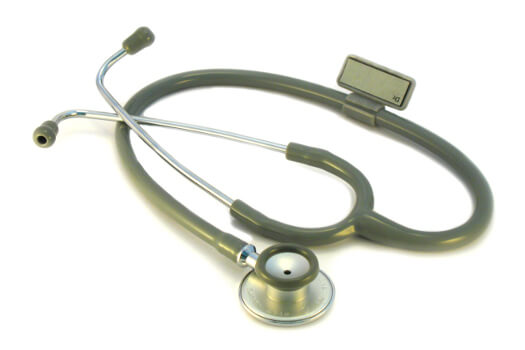
Talking To Your Doctor About Chronic Pain Is Hard
UPDATE: This post has been updated with links to additional tips from About.com and an organization called Speak Up. See the end of the post for the links!
If you’ve ever had the experience of talking to your doctor about your chronic pain condition and feeling distinctly unheard, this post is for you.
Why Communicating About Pain Is So Difficult
Pain is, by nature, a subjective experience. We know that, even with the same diagnosis, any two patients may well experience their symptoms in quite different ways. Even within the same patient’s experience, the perception of pain level, intensity, and quality may differ wildly from day to day.
Add to this subjective nature the sometimes-significant impacts that outside factors may have on our pain levels — diet, exercise or movement, mental stress, difficult relationships, sleep quality/quantity — and it’s no wonder that we have trouble expressing our pain.
But communication requires two actions — talking and listening/interpreting. As hard as it is for you to explain your pain to another person, it’s equally hard for the second person to interpret what you say “correctly.” Even using that tired old trope, the 1 to 10 pain scale (which, for many reasons, ought to be done away with completely), isn’t much help.
For instance, you and I may both say we feel our fibromyalgia pain at a level of 8. But who’s to say that your “8” is my “8”, or equivalent to it? We can’t know that. All I can take from your statement that “My pain is at a level 8” is that, for you, at this moment in time, you’re about two steps away from feeling complete and total agony, and about eight steps away from feeling no pain at all — whatever that means to you.
Doctors Ought to Be Different
None of which is to say that your medical professionals should be given a pass on taking your pain seriously. Doctors can and ought to be different. With their years of medical training and hands-on experience with both acute and chronic pain, our physicians must be held to a much higher standard of communication and empathy.
Yet, too often, we all hear stories about how doctors — even those who have treated patients for years before the onset of the chronic pain condition — dismiss patients’ reports of chronic pain as being “all in your head” or “stress-related” or worse. It’s no secret in the fibromyalgia community, for instance, that many MDs and nurses think that any fibro patient who asks about medication is simply drug-seeking.
You don’t need to walk a mile in a fibromite’s shoes to know that this is true. Look at any episode of just about any medical drama on television where reports of mysterious pain play a part in the patient of the week’s diagnosis. See how they roll their eyes, or dismiss the reports completely if the MRI is “clear.” This is deeply ingrained and it’s insidious.
Fear of Legal Repercussions Among Physicians For Prescribing Pain Medication
Then again, doctors have a not-completely-irrational fear of prescribing medication for chronic pain. Reports of doctors losing their licenses or even facing criminal prosecution for prescription practices are all too common. Some of these prosecutions are, undoubtedly, warranted. But whether they are or aren’t is almost beside the point; the impact on other physicians is a definite chilling effect on the whole notion of medicating against pain.
If the war on drugs makes doctors squeamish about treating chronic pain assertively, then it only stands to reason that they’ll be less receptive to taking pain reports seriously. Some MDs attitudes seem to be “If I can’t treat it, it isn’t real.” Of course, that’s nonsense, but even so, a subjective fear can and will affect a person’s willingness to enter into an open dialogue about that subject. We don’t want to face what we can’t control. Perhaps this is even more true for physicians who are trained and groomed to take almost godlike control over their patients’ physical processes.
Seven Steps to Make Talking to Your Doctors More Effective
Have hope, however. There are things you can do to make communication with your physician more effective. Seven suggestions are listed below.
1: Come Prepared
Sitting in the waiting room, flipping through magazines that are three years old – now is
not
the time to start thinking about what you want to say to your doctor! Start preparing for the next doctor’s visit on the day after the last visit, ideally. At a minimum, take a half-hour or so to jot down your questions and concerns the day before the visit. Then, sleep on it. Give yourself some time to think of the four or so things you left off the list due to your fibro fog!
2: Bring The Logbook
One of the most useful tools in the chronic pain patient’s arsenal is The Logbook. You can call it a diary, your notes, a list, or Babe the Pig if you want, but whatever you call it, KEEP ONE. Whether it’s a separate legal pad, a computer file, a composition book you “borrowed” from your kid’s school supplies, or the back of a napkin, it’s a very handy thing to have.
In it, you’ll want to note, on an ongoing, daily basis, the following information:
- basic information about your diet
- list of medications/supplements you take, including dosages and times
- brief mention of symptoms and description of their intensity, frequency, duration, and nature
- information about the quality and quantity of your rest
- a list of any exercise and/or movement you undertake
- your emotional/mental state (it’s just as much a part of your health as your physical pain)
While it’s a lot of work to keep all this information updated every single day, it will truly be an invaluable resource for both you and your doctor. It’s worth the trouble to keep this logbook going and constantly updated. (Mine is a dedicated moleskine journal. I get them in packs of three for about $12 from Amazon.com.)
3: Do Your Research …
Before you go to the doctor for your next visit, take your list of questions that you prepared in step #1 and sit down in front of the computer for a half hour or so. Look for reliable information about any new symptoms you’re experiencing, or medications you may have heard about, or side effects that you’re concerned about. Note those in your logbook.
If you really want to help your doctor (or eliminate all of his/her excuses!), take in printed copies of your resources. Print off the page from the website, showing the URL, and hand that to him/her at the examination.
4. … But Use Some Common Sense
When you’re looking at new resources, especially ones on the web, please keep in mind a couple of points. First, anyone can write anything on the web. There are no checks and balances, and this means that there is a lot of really bad, if not downright harmful information floating around out there.
Second, with printed resources that are conventionally published, manuscripts typically go through some kind of vetting or peer review process, especially with medical issues. While this process is far from infallible, it does tend to give the conventionally published book a bit more authority, or at the very least, the appearance of more authority, than does “Joe’sFibroPage.com.”
So pick your resources carefully, and recognize upfront that your MD may well be skeptical, with good reason.
5: Respect Your Doctor’s Education and Experience
I can already hear some hackles being raised out there. But hear me out – there’s a very practical reason why you don’t want to go in to a doctor-debate all hotheaded, indignant, and dismissive.
Your MD went to school for a long time before he was even allowed to call himself a doctor. That was followed by years of interning and residency, and possibly a long board certification process as well. He is not a god, no matter what he may secretly believe. But he is a human being with a certain amount of expertise, and he is entitled to a modicum of respect, at the very least.
If you reject that out of hand, fine, but consider this: how would
you
react if someone came up to you and in a confrontational, accusatory tone began an argument with you? When that person began dismissing your opinions and getting very defensive, how do you think you’d feel about continuing the discussion with him or her?
Resist if you like, but good communication skills require a courteous, respectful tone.
6: Demand the Same From Your Doctor
While it’s important to keep your cool when speaking with your doctor, and to use a courteous, respectful tone, it’s also important not to inadvertently teach your doctor to abuse your good nature. If things get out of hand — if the doctor says something inappropriate, for instance, or begins to dismiss you before the discussion is through — you’re going to have to speak up.
For some folks, this is no problem. But for many of us, speaking up in this situation is downright scary. If you feel you might want to run and hide, or avoid the conflict altogether, it’s best to spend some time with a friend or family member roleplaying this scenario before the doctor’s visit. This will give you some practice thinking on your feet, and simultaneously getting comfortable standing up for yourself in difficult situations.
Then, if the worst does happen, you can pull yourself up straighter, adopt your “I’m serious and you’d best listen” face, and say:
- “Respectfully, doctor, if you cannot take my symptoms seriously, I will be forced to take my medical files and find a physician who is more equipped to treat my case.”
- “Doctor, I have no problem having a healthy discussion, even if we disagree. But I will not be spoken to condescendingly, and I will not be dismissed. If it happens again, I will leave and I will take my files with me to find a doctor who knows how to communicate respectfully with patients.”
- “Excuse me, I’m not finished yet. I’d prefer to discuss these concerns with you now.”
One word of caution: if you issue an ultimatum (as the first two examples do), you must be prepared to follow through with it. I could write an entire post just on this point alone but for now, know this: it’s your body. Your money. Your life. You are entitled to be treated with respect and to have your concerns taken seriously by your treating physician. You owe him nothing more than respect and payment for services rendered. That’s it. If he isn’t willing to live up to his end of the bargain, you have no choice but to find a more honorable doctor.
End of sermon.
7: Take a tape recorder, or another person.
This is probably the single most helpful tip I ever received as a patient. When you’re stressed out about your illness, nervous about having this discussion in the first place, and probably in pain to boot, you’re probably not going to be listening as carefully as you’d like.
You could take notes with pen and paper, but that takes you out of the conversation. You have to stop listening fully, in order to think about what to write, and then write it down. Then it takes a bit of time to get back in the conversation. It’s just not effective, especially when doctors are limiting their time with patients.
The solution: tape record the conversation, or have someone else there to take notes and act as a backup to your memory. If you’re concerned about bringing either another person or a tape recorder into the conversation, please know that most all doctors are used to it, or at least won’t be surprised by it. Many physicians advocate the practice themselves. They know it’s a lot of information to take in at a stressful time.
Simply make sure you ask if it’s all right with the doctor if you record the conversation (or have your friend take notes). Almost all doctors will say “sure, go ahead.”
What do you do if they don’t — if they protest, or say they’re not comfortable with that? Well, you have a few options. You can insist. You can walk out. You can give in without another word. Or, you can ask your doctor for more information. What bugs him specifically about the recorder? Why does she not feel comfortable with another person in the room? Then you can address the real concern.
If you can’t reach an agreement, then you’ll have to consider whether this doctor is the right one for you. Personally, I’d be a little suspicious of a physician who adamantly refuses to let me have a little backup in the exam room.
Conclusion: Speak Out!
Talking to your doctor about your pain is unquestionably difficult, but it’s not impossible. Follow these seven tips and you’ll be more comfortable with it on the next visit.
What do you think? What do you do to help your doctor understand your pain? Have you ever had a doctor dismiss your pain? How did you handle the situation?
UPDATE
Take a look at About.com’s Fibromyalgia and CFS Blog for some more tips on communicating with your doctors. Also, visit Speak Up’s website – this is an initiative from The Joint Commission with the mission to improve communications between patients and doctors. That site’s also been added to the Resources page here at The Tramadol Diaries.






